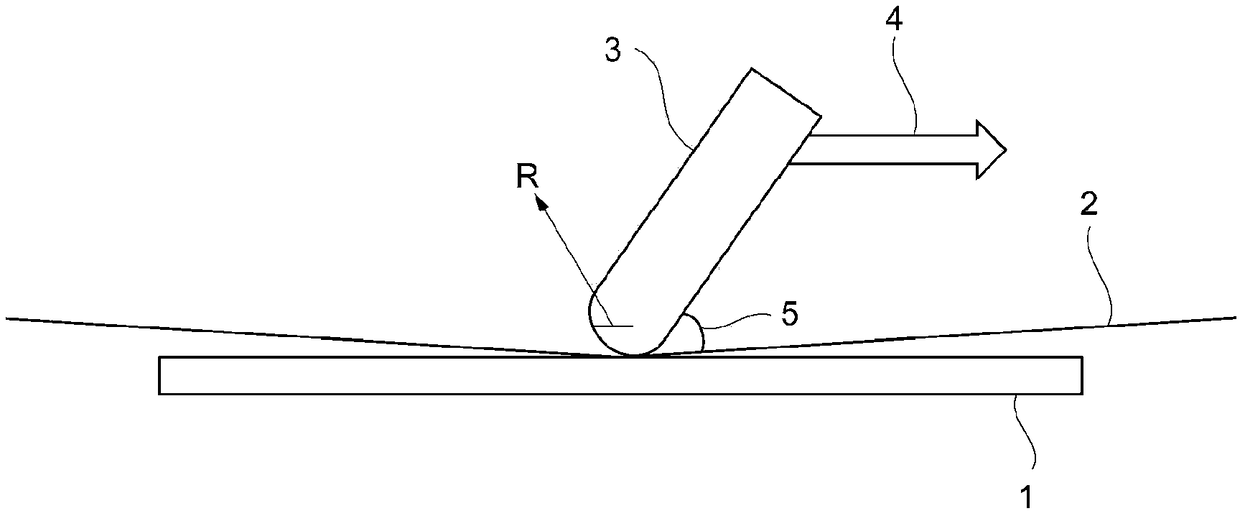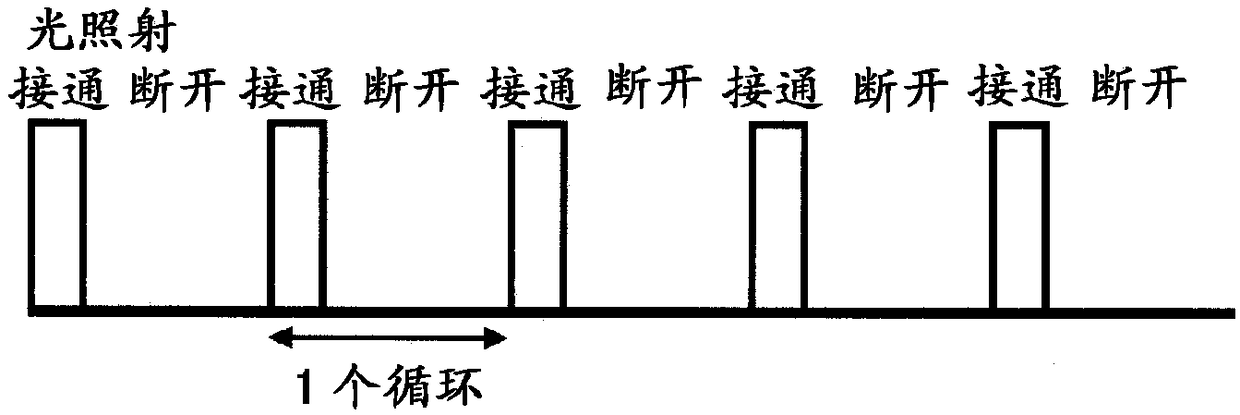Method for forming transparent conductive pattern
A technology of transparent conductivity and transparent conductivity, which is applied in the direction of conductive pattern formation, conductive materials, conductive materials, etc., can solve problems affecting conductive performance, metal nanowires and/or metal nanotube damage, etc., to reduce damage, low surface area, etc. The effect of resistance value
- Summary
- Abstract
- Description
- Claims
- Application Information
AI Technical Summary
Problems solved by technology
Method used
Image
Examples
Embodiment 1
[0092]
[0093] Polyvinylpyrrolidone K-90 (manufactured by Nippon Catalyst Co., Ltd.) (0.49 g), AgNO 3 (0.52g) and FeCl 3 (0.4 mg) was dissolved in ethylene glycol (125 ml), and a heating reaction was carried out at 150° C. for 1 hour. The obtained precipitate was separated by centrifugation, and the precipitate was dried to obtain the target silver nanowire (average diameter 36 nm, average length 20 μm). The above ethylene glycol, AgNO 3 and FeCl 3 It is manufactured by Wako Pure Chemical Industry Co., Ltd.
[0094]
[0095] After adding 6 times the volume of dibutyl ether to the reaction solution of silver nanowires obtained by performing a heating reaction at 150° C. for 1 hour and stirring, the nanowires were left still to precipitate. After the nanowires were precipitated, the supernatant was separated by decantation, thereby performing solvent replacement to obtain a suspension of silver nanowires dispersed in dibutyl ether (viscosity adjusting solvent) containin...
PUM
| Property | Measurement | Unit |
|---|---|---|
| Average diameter | aaaaa | aaaaa |
| Average length | aaaaa | aaaaa |
| Thickness | aaaaa | aaaaa |
Abstract
Description
Claims
Application Information
 Login to View More
Login to View More - R&D
- Intellectual Property
- Life Sciences
- Materials
- Tech Scout
- Unparalleled Data Quality
- Higher Quality Content
- 60% Fewer Hallucinations
Browse by: Latest US Patents, China's latest patents, Technical Efficacy Thesaurus, Application Domain, Technology Topic, Popular Technical Reports.
© 2025 PatSnap. All rights reserved.Legal|Privacy policy|Modern Slavery Act Transparency Statement|Sitemap|About US| Contact US: help@patsnap.com



